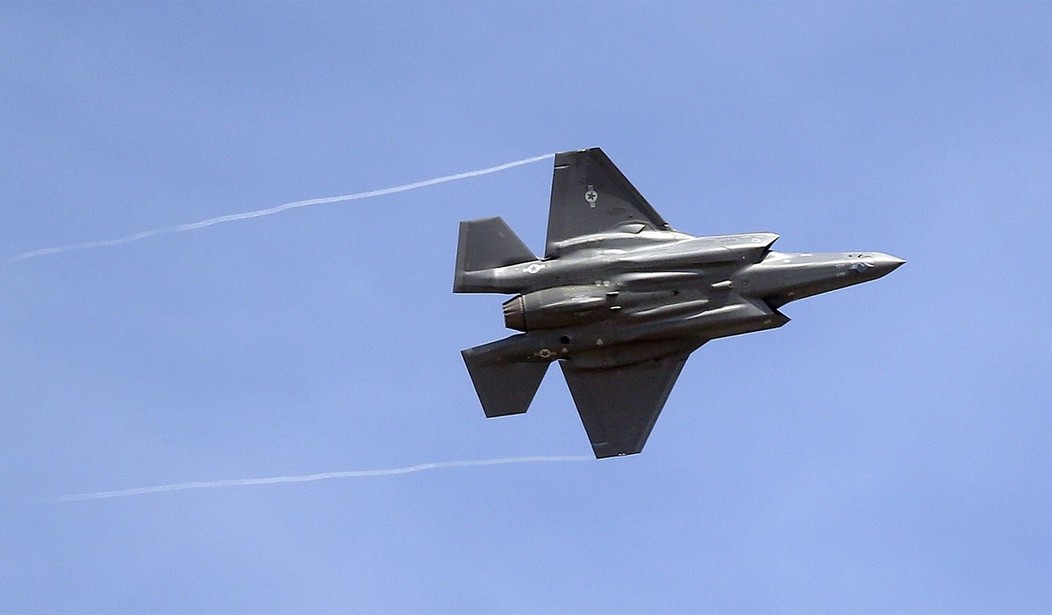If we didn’t have broken promises, we’d hardly have any promises at all when it comes to the F-35! Broken promises are a hallmark of the F-35 program resulting in a high cost to the taxpayer. The program is projected to cost more than $1 trillion to the taxpayer using tax dollars or the taxpayers' credit card depending on accounting. Either way, the F-35 costs $33,000 per hour to fly, yet the contractor’s promise to get that number down to $25,000 per hour is supposed to make us feel better.
The whole F-35 project feels similar to a trip to buy a new car. When one steps into a car dealership, they immediately are descended upon by a number of salesmen who act like they are your best friend from high school making promise after promise. When one sees the sticker price and flinches, the dealer says that this is a “special, one-time” deal. That scenario ends up producing an owner of a brand-new car who feels ripped off.
The same is happening in defense contracting. Breaking Defense reports that “Lockheed Martin is projecting another 40 percent drop in its portion of the F-35’s costs per flying hour by 2025, a trend that is expected to continue, company officials said today. Moreover, they argue, overall costs could be even further reduced should DoD sign a company-proposed multi-year performance-based logistics (PBL) contract.” In other words, if the government signs a brand-new multiyear contract with the government, then they will save even more money. Sound familiar?
There are many problems circling the F-35 and one of them is the Department of Defense won’t walk away from this project because military leaders are preparing to fight the last war. The F-35, known as the Joint Strike Fighter, may once have seemed like a good idea back in the 1990s. Back then, the idea was to conserve resources, by developing one weapon system that could replace several aging planes. The F-35 would fly for the Air Force and the Marines and the Navy. They could share parts and training manuals. The system would be stealthy, lethal, and undefeatable.
Recommended
That was the plan, but none of it has come to fruition. The reality is that time has caught up with the F-35, and even sailed past it. The threat in the 21st Century isn’t the Iron Curtain. It is China. And the F-35 wouldn’t be especially useful in a war against China.
Don’t take my word for it. After a war game pitting the U.S. against China, Air Force Lieutenant General Clint Hinote told Defense News, “We wouldn’t even play the current version of the F-35. It wouldn’t be worth it.” That is because the Chinese military already knows how to defeat those planes."
"Every fighter that rolls off the line today is a fighter that we wouldn’t even bother putting into these scenarios,” Hinote concluded. In fact, even for war games, the Air Force is required to pretend it has advanced weapons that are still on the drawing board. Our supposedly advanced F-35 is yesterday’s technology.
Even if the F-35 had worked as designed – and to be fair, it never came close to doing so – it would now be nearing the end of its workable life. The fact that the Pentagon will invest some $1.7 trillion in the program is beside the point. That is a sunk cost, and there is no way to recover it. Instead of pouring another $78 billion into the program over the next five years, military leaders should look for a different approach.
Lawmakers are already taking notice. “Stop throwing money down that particular rathole,” Rep. Adam Smith (D-Wash.) said of the program. “What does the F-35 give us? And is there a way to cut our losses? Is there a way to not keep spending that much money for such a low capability because, as you know, the sustainment costs are brutal.”
There is a way, of course: focus resources on the next generation of weapon systems.
“Last September, the U.S. Air Force shocked the aviation world when they announced that they not only had a design in mind for their Next Generation Air Dominance (NGAD) fighter, they’d already built a prototype and flown it,” analyst Alex Hollings reports. Perhaps this is the potential weapon the Air Force relies on in its war games so it can defeat the Chinese.
Author Sean McFate sums the issue up. “The irrationality of the F-35 goes beyond the price tag — the plane is superfluous. It was devised as a flying Swiss Army knife that could meet the needs of the Air Force, Navy, Marines and Army,” he wrote at The Hill. “Instead, it proves the adage that a camel is a horse designed by committee.”
The military needs to deploy its next generation of weapons as quickly as possible and stop buying the promises of a contractor that has overpromised for years. This is a time for looking forward, not backward.

























Join the conversation as a VIP Member